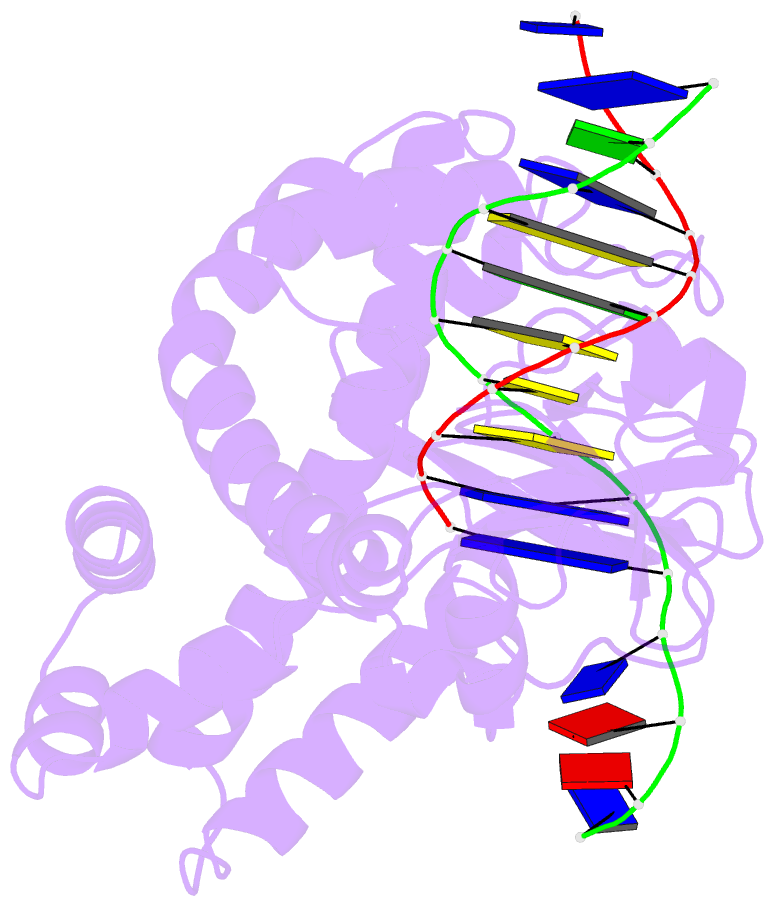Summary information and primary citation
- PDB-id
- 2h7g; SNAP-derived features in text and JSON formats;
DNAproDB
- Class
- isomerase-DNA
- Method
- X-ray (1.9 Å)
- Summary
- Structure of variola topoisomerase non-covalently bound to DNA
- Reference
- Perry K, Hwang Y, Bushman FD, Van Duyne GD (2006): "Structural basis for specificity in the poxvirus topoisomerase." Mol.Cell, 23, 343-354. doi: 10.1016/j.molcel.2006.06.015.
- Abstract
- Although smallpox has been eradicated from the human population, it is presently feared as a possible agent of bioterrorism. The smallpox virus codes for its own topoisomerase enzyme that differs from its cellular counterpart by requiring a specific DNA sequence for activation of catalysis. Here we present crystal structures of the smallpox virus topoisomerase enzyme bound both covalently and noncovalently to a specific DNA sequence. These structures reveal the basis for site-specific DNA recognition, and they explain how catalysis is likely activated by formation of a specific enzyme-DNA interface. Unexpectedly, the poxvirus enzyme uses a major groove binding alpha helix that is not present in the human enzyme to recognize part of the core recognition sequence and activate the enzyme for catalysis. The topoisomerase-DNA complex structures also provide a three-dimensional framework that may facilitate the rational design of therapeutic agents to treat poxvirus infections.





